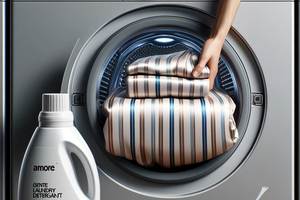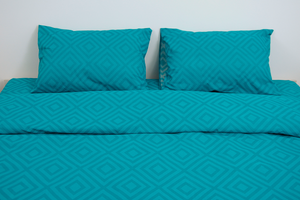When choosing a fabric for making bedding or clothes, the question often arises: "What is better to choose - natural satin or polyester?". Below are the key differences between these popular materials so that you can choose what you really need.
Properties and characteristics of satin
What is sateen? Satin is a dense, shiny cotton fabric. A special production technology gives sateen a wonderful silky sheen. The material is characterized by high strength, resistance to abrasion, repeated washing without loss of quality.
Satin is very pleasant to the touch due to its smoothness, softness and ability to follow the curves of the body. It is a natural hypoallergenic fabric that is perfectly breathable and does not cause irritation even to the most sensitive skin.
The disadvantage is the higher price compared to polyester. However, satin underwear lasts many times longer!
Polyester: material features
Answering the question: "What is polyester?", first of all, it should be noted that polyester is a completely synthetic fabric that imitates such natural fibers as silk, cotton, wool. Polyester is easy to care for: it does not wrinkle, dries quickly, and can be washed easily at a temperature of 40 degrees.
Due to its strength, polyester is often used to make backpacks, bags, jackets, etc. Thanks to its ability to retain its shape, it is very popular for making T-shirts, blouses, and, when other threads are added, bedding.
The disadvantages of polyester include reduced air permeability, a tendency to strong electrification, as well as intolerance by some people and the risk of allergic reactions. This material is much less environmentally friendly in production and disposal.
The difference between satin and polyester
What exactly is the difference between satin and polyester? So, the main difference between satin and polyester is as follows:
Satin is a natural cotton material, and polyester is a synthetic.
Satin is hypoallergenic and environmentally friendly, while polyester can cause allergies.
Satin is breathable and maintains an optimal body microclimate. Polyester is less breathable.
Satin is stronger, more durable, and retains its quality and appearance longer.
The difference between polyester and polysatin
Polysatin and polyester are different fabrics with different properties: Polysatin:
It is a type of satin with an admixture of synthetic fibers, most often polyester. The ratio of natural and synthetic fibers may vary.
It has a characteristic shine and silky smoothness of satin.
More durable and practical to care for than natural satin due to the addition of polyester.
Fully synthetic.
Less durable and focused on short-term use of clothing/linen.
It is less breathable and can cause skin allergies.
Thus, polysateen retains the quality of natural cotton base, but is more practical to care for and wear. Pure polyester is less durable and comfortable.
The difference between striped sateen and striped polyester
Many buyers are interested in the difference between striped sateen and striped polyester - which is better to choose for sewing textiles? Let's compare these materials. Striped sateen and striped polyester as varieties of satin and polyester generally retain the properties of the original materials. However, there are nuances:
The striped pattern on sateen with its silky-shiny surface looks much more impressive and expressive. This is due to the reflection of light and the play of glare that emphasizes the texture of the fabric.
Satin stripe is more durable and resistant to abrasion under the influence of external factors. The fabric loses its original appearance less and can withstand many wash cycles. At the same time, we are in a hurry to announce the good news - we have purchased a revolutionary new generation of T115 striped polyester! Its density is 115 g/m2, and the stripes pattern completely repeats the spectacular design of striped sateen. But the entire fabric is made of 100% polyester.
The main advantage is that the price of our striped polyester is more than 2 times lower. You save on the purchase of raw materials for future products! Only 94 dollars for a 60-meter roll. At the same time, T115 strip polyester retains all the advantages of satin: high wear resistance, resistance to repeated washing, ease of care, no shrinkage. Your products will delight customers for many years!
Thus, it is more profitable to use striped polyester for mass production of linen, clothing and accessories. And wholesale striped sateen remains a premium solution for exclusive collections.


















